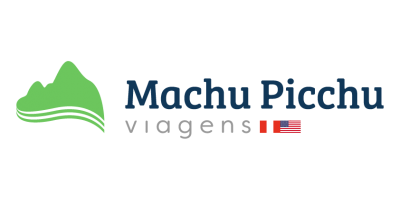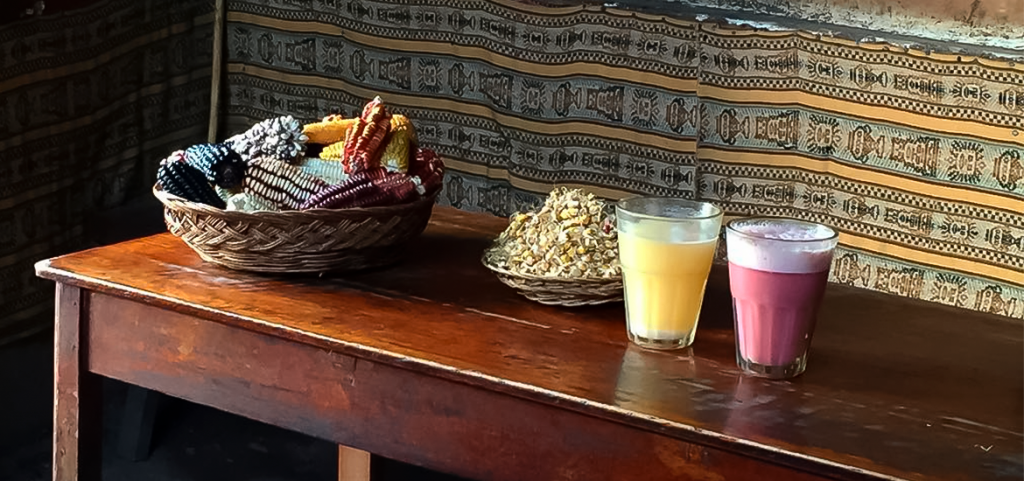Between the vast and abundant legacy Peru has received from the Incas, there’s a palpable legacy that’s over 500 years old and currently is still consumed by people from the Peruvian Andes to the Amazon jungle. We’re talking about the “Chicha de Jora”, a corn-beer-like drink from the Inca Empire. This drink was important in Incas’diet then and is still part of Peruvian daily life. Let’s find out about this ancestral drink’s history, details, and curiosities.
What exactly is Chicha de Jora?
In Peru, there are plenty of corn kinds, the ones that are used for making this ancient potion are white or yellow corn called “Jora”. This corn goes through the germination and fermentation process before being used. This gives it its distinct flavor and qualities. During the Inca times, this drink was central to important ceremonies and religious events, such as human sacrifices.
Incas believed that drinking “chicha de jora” was a way to communicate with the “apus” (mountain deities), gods, and their ancestors. Incan royalty most likely drank chicha from ceremonial cups called “keros”. Chicha was a key part of “Pachamama” rituals that worshiped the gods and Mother Earth.
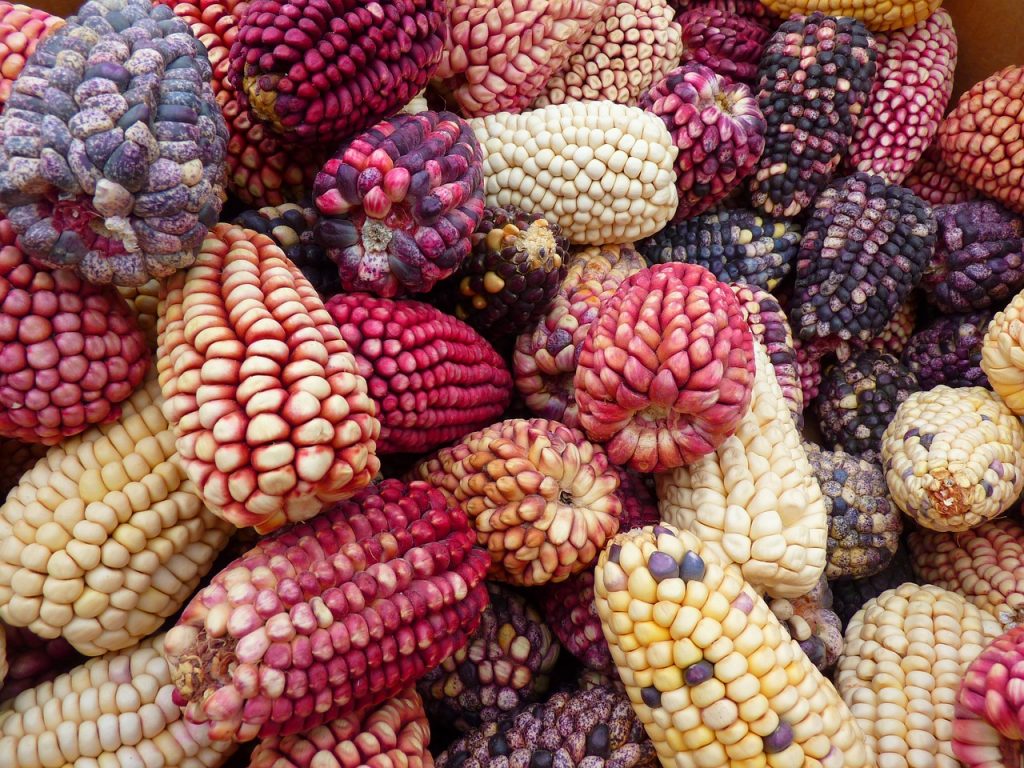
The traditional chicha-making process is a tedious task taking more than 15 days from start to finish. The result is a hazy yellow liquid with a sour, somewhat corn-like flavor. The result is an alcoholic drink with a low alcohol concentration.
Chicha de Jora, the origin
The legend has it that winter was harsher under the reign of Inca Tupac Yupanqui. Heavy rains slammed the empire, and many people lost their homes and supplies. Humidity from the rain reached the containers where the corn was stored, ruining the crop.
Corn seeds were fermented by mixing them with rainfall. Just by coincidence, the Incas found corn malt. Initially, they attempted to distribute this new drink to the broader population. However, when people smelled its aroma, they assumed it was ruined and discarded it.
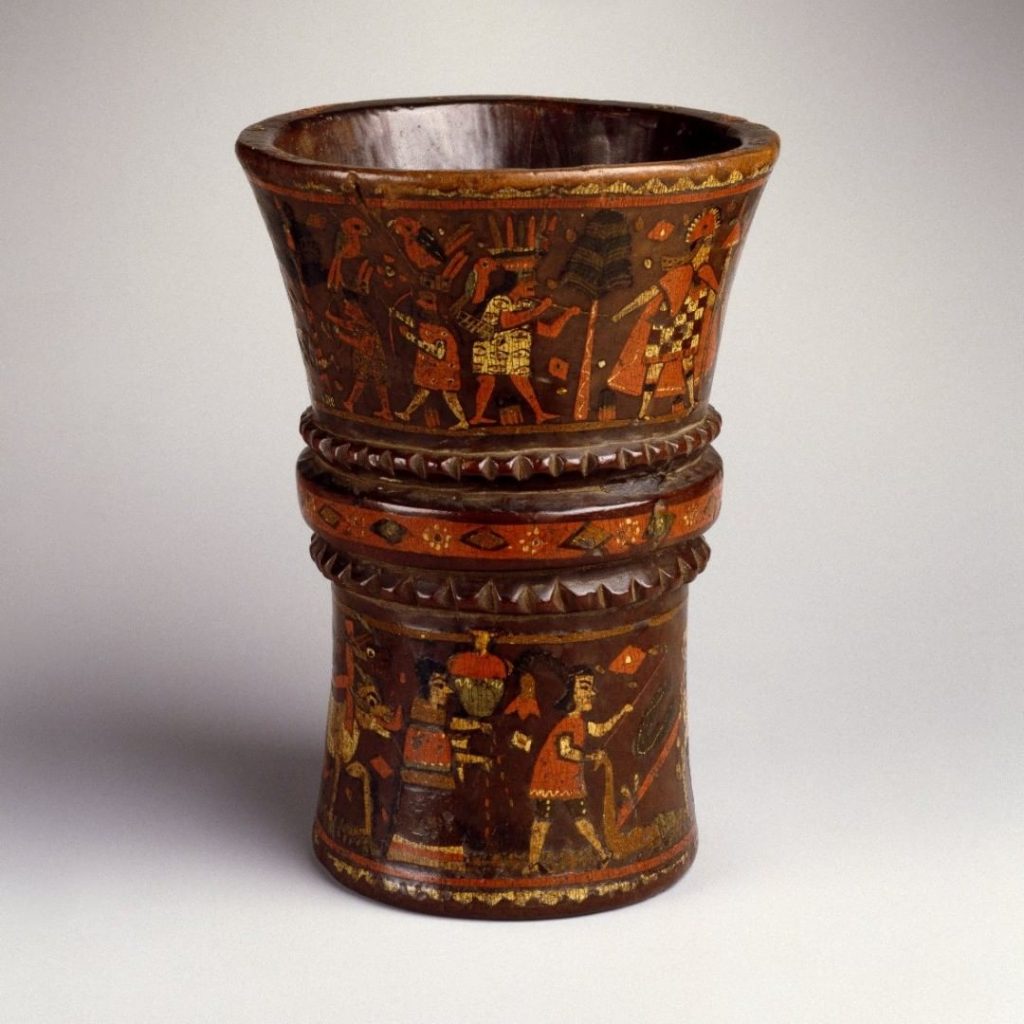
However, in a strange coincidence, a hungry indigenous man discovered this drink in the trash and decided to consume it. He could satisfy his thirst, but he got drunk. Later, the chicha was known as the main beverage of the Empire.
During the colonial time
When the Spaniards arrived in the South American country, around 1500, Inca Atahualpa offered chicha contained in a kero to the Dominican priest Vicente de Valverde as a gesture of friendship.
The priest, who was unfamiliar with this political ceremony, felt Atahualpa was attempting to poison him and knocked the drink to the ground. This conduct enraged the Inca emperor, destroying any prospect of a positive relationship between the two.
The priest, who was unfamiliar with the political ceremony, thought Atahualpa was trying to poison him and knocked the cup to the ground. He had no idea that this act would become a tradition for every chicha de jora drinker and the gatherings they attend. The foam that collects at the top of the glass is poured out to the ground to honor Pachamama. This tradition is still performed today.
Types of Chicha
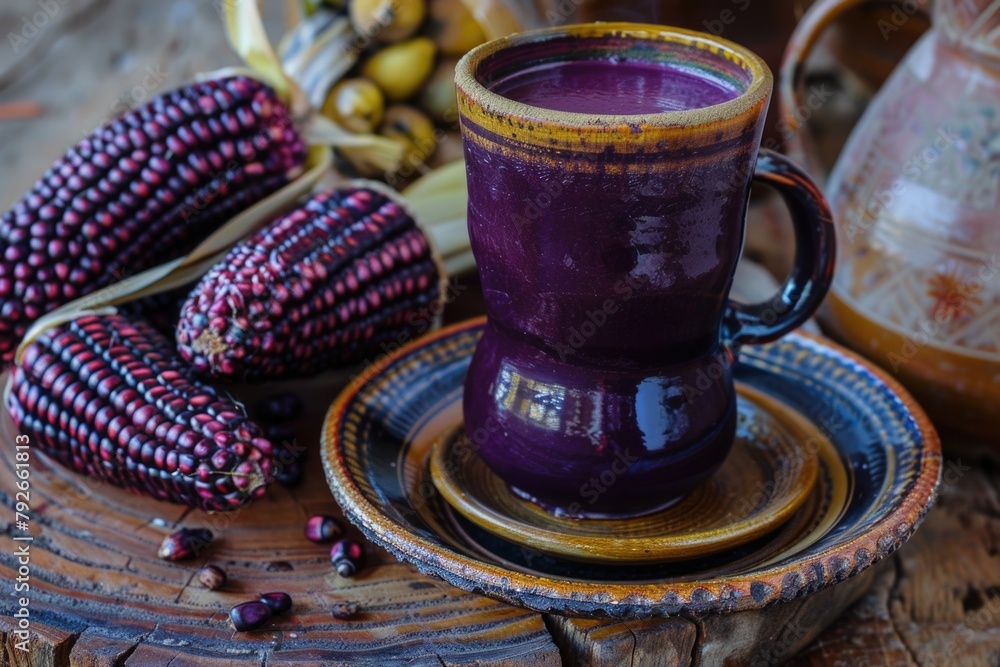
Around 2500 years ago, a civilization in northern Peru began cultivating corn. By 100 AD, the Moche culture advanced this legacy with innovative irrigation and agricultural methods. Later, the Inca civilization expanded corn cultivation into the Andes.
This history intertwines with Chicha Morada, a non-alcoholic Peruvian drink made by boiling deep purple corn, pineapple rind, clove, and local fruits. It’s enjoyed across Peru, from upscale restaurants to street markets and homes.
Tip: Some people enhance the flavor of this delicious drink by adding sugar and cinnamon.
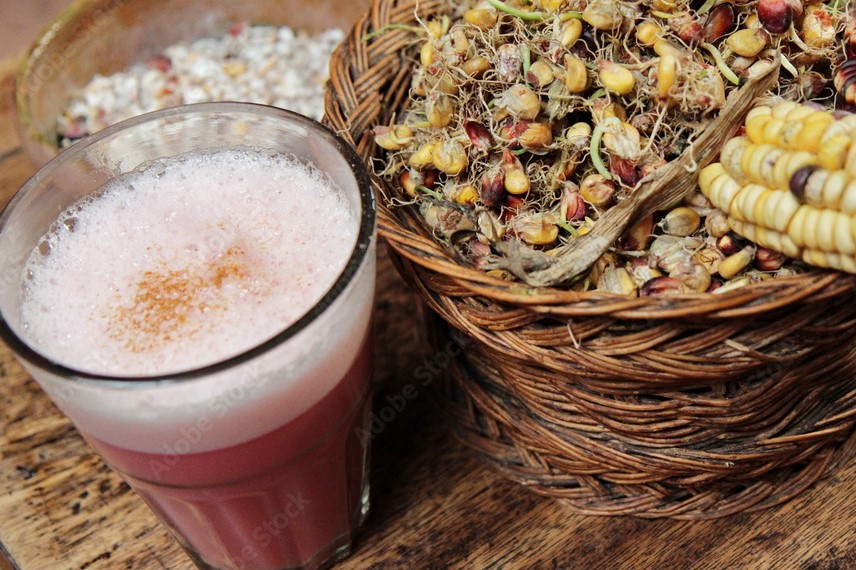
Frutillada is a kind of chicha de jora made with the smaller, more flavorful frutilla, a type of strawberry native to the Andes of Peru. Is a safer substitute for Chicha de Jora that is sweeter, should you be worried about ingesting the Inca remedy. Frutillada is more aesthetically pleasing and kinder to the palette because of its pink-colored color. In Cusco is a popular drink for people of all ages

Chicha de Guiñapo has a particular crimson color and is Arequipa’s emblem. Chicha de güiñapo is made by fermenting black or purple corn grains that have germinated. The phrase “güiñapo” comes from Quechua and means “to ripen” or “to age.” The black corn in which this chicha is made was domesticated thousands of years ago by ancient residents of the region.
Regions of Peru such as Trujillo, Chiclayo, or Chachapoyas have their own version of fermented beverages. Try them all!
Chicha in Peruvian Gastronomy
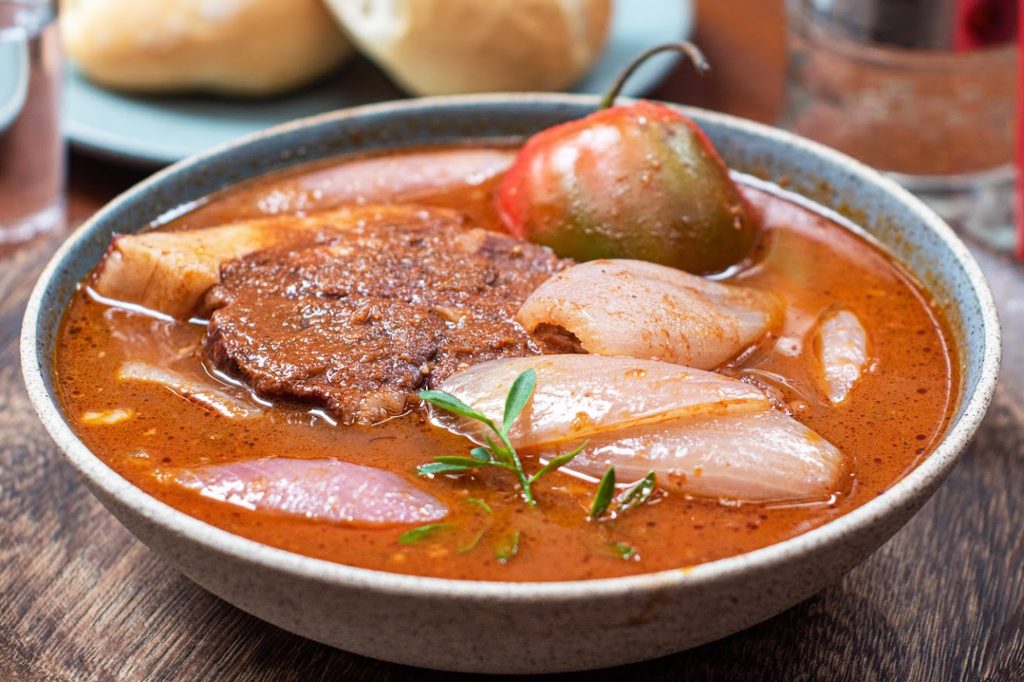
Chicha de jora is used as a base for soups and stews, adding a unique flavor and texture to these Peruvian dishes. For example, it is used in the preparation of the popular Peruvian dish “seco de cordero,” where it serves as a cooking liquid for lamb, providing an intense flavor and a smooth texture.
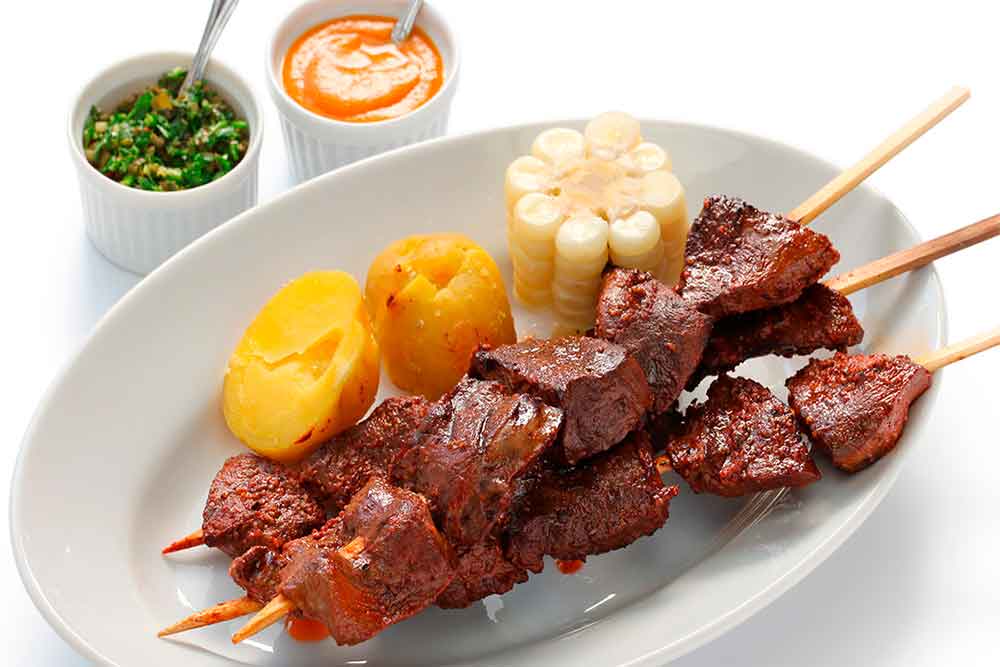
Chicha is also used in traditional Peruvian dishes such as “anticucho”, “adobo”, and stew. In these Peruvian dishes, chicha de jora acts as a marinade agent, tenderizing the meat and imparting a characteristic flavor.
Additionally, chicha jora is utilized in Peruvian pastries, particularly when making traditional desserts. It adds a distinct flavor and perfume to cakes and sponge cakes.
Chicha in Peruvian Modern Culture
Gaston Acurio, the Mastermind of the Peruvian Food Boom

The character why Peruvian food has been top in international food competitions is Gaston Acurio, a Peruvian chef, well renowned in Peru thanks to his publications, TV programs, and restaurants, such as Chicha, the most popular of his restaurants named after the traditional Peruvian beverage.
Recently his restaurant earned awards and recognition, recently it was added to the famous Michelin Guide.
Chicha has locations in Cusco and Arequipa in Peru, and abroad in Germany. Chicha specializes in regional food using regional ingredients, leading culinary techniques are used to create each dish, which is also infused with local ingredients, customs, and culture.
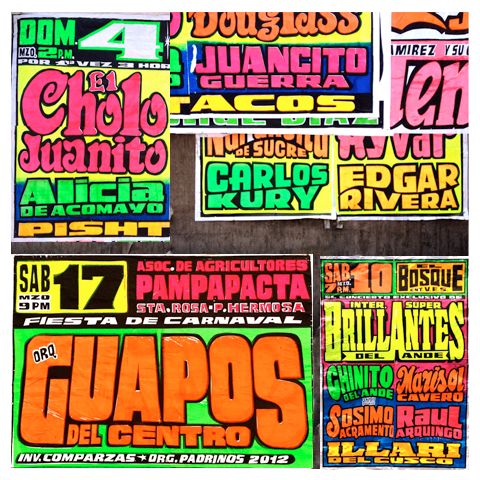
Ni Chicha ni Limonada
Peruvians have an interesting relationship with food: It’s part of our language! We’ve got plenty of colloquialisms, slang, and frequent words related to food.
For example, Habla causa! (What’s up) Causa is a typical Peruvian dish made from mashed potatoes with a filling in the middle.
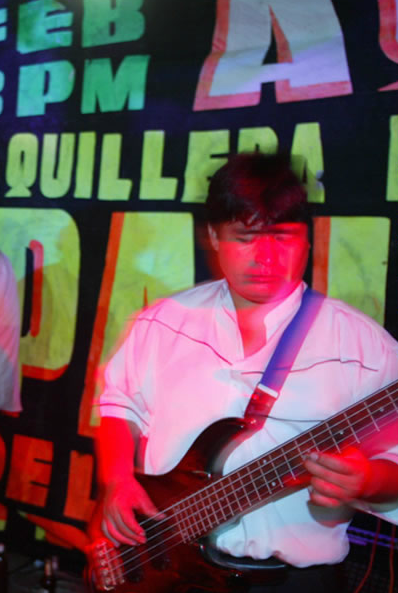
Cual es tu cau cau? (What’s wrong with you) alludes to another typical dish. When we say something is a piece of cake, we say “papaya”, when you aren’t lucky, we tell you “piña” (ananas, tropical fruit) or if you’ve said you’re “lenteja” means you’re too slow.
Peruvians have a phrase, “Ni chicha ni limonada” that means “Neither one nor other”, we use that phrase to refer to someone who lacks conviction or character. Here you have another reference to the ancient drink used until today.
Chicha Music
Chicha Music is the blend of Peruvian cumbia and “huayno” Peruvian traditional music. Its lyrics reflect the pain and sadness of people who left their homes behind, moving into the capital, Lima. Over time, Chicha evolved to more complicated sounds, such as psychedelic rock, and pop. Chicha Music doesn’t miss at parties or celebrations in Peru.
F.A.Qs About Chicha
Where Can I Drink Chicha?
Peruvian “picanterias” (Peruvian traditional restaurants) are a good place to find chicha de jora and its variations. “Chicherias” or “Ajha Wasi” (Places specialized in chicha, similar to pubs or taverns that offer food like picanterias) are not common nowadays, however, if you find one, you can give it a try!
You can tell them that chicherias have a tall pole with red plastic or red cloth wrapped around the entrance of a house. During your trip to the Sacred Valley or in Cusco downtown, you can find street vendors offering Chicha.
Is Chicha Safe to Drink?
Yes, it is as the fermentation process eliminates all the bacteria, however, be careful where you try it.
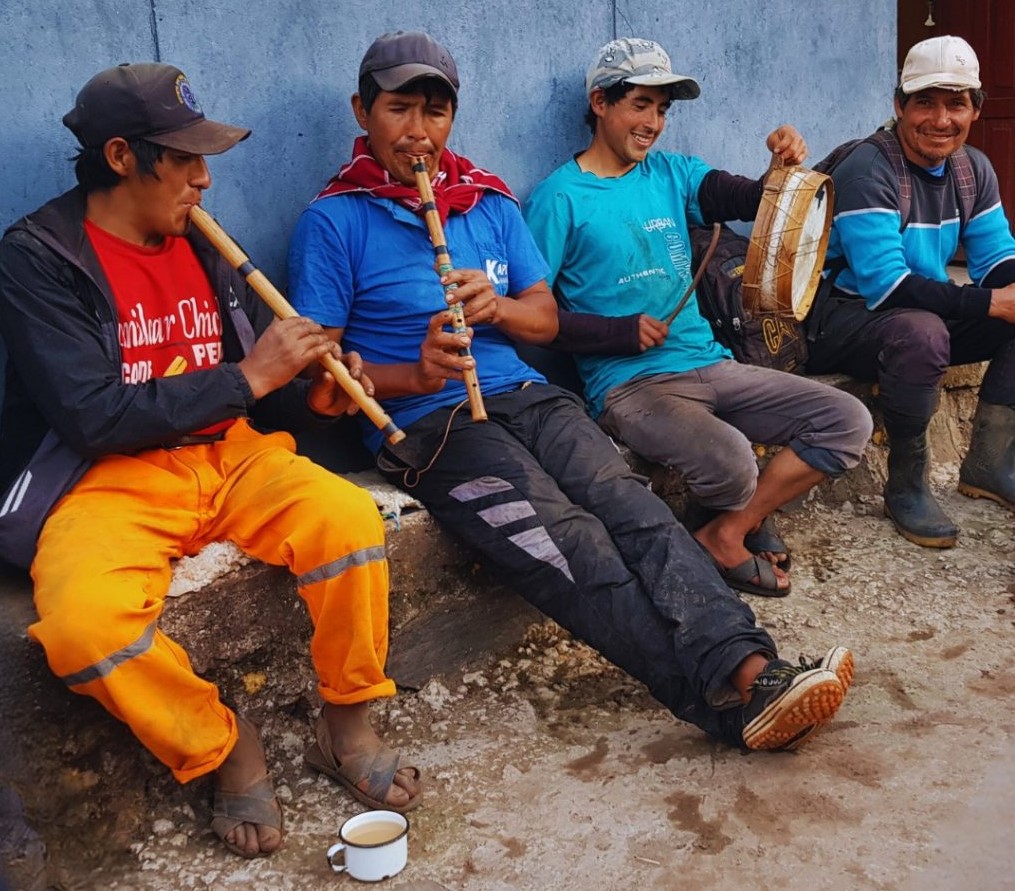
Does the Chicha have properties?
Especially in the Andes, people say that chicha fortifies the body, and gives energy. Chicha morada is good for health as it is scientifically proven that it has antioxidants.
How Much alcohol is in the Chicha?
The grade of alcohol varies according to the type of chicha and the person who made it. Factors like fermentation time and way of preparation affect how much alcohol the chicha will have
Are you thirsty yet? Try a glass of Chicha in Peru, Cusco, or Arequipa, the best places where we recommend drinking it. Before you try it, keep in mind the legacy of this ancient tradition, and what represents for us, Peruvians.
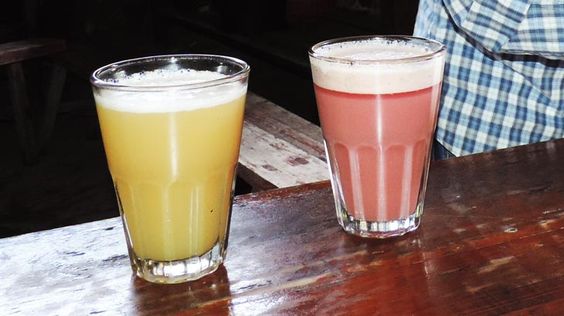
Viagens Machu Picchu allows you to learn more about Peru, its fascinating destinations, and its food. Ask about our food tours, including chicha, and enjoy the real Peruvian cuisine! Let’s travel together!
Viagens Machu Picchu, journeys that inspire, moments that last.
| Español > Viagens Machu Picchu |
| English >Viagens Machu Picchu |
| Portugués > Viagens Machu Picchu |
